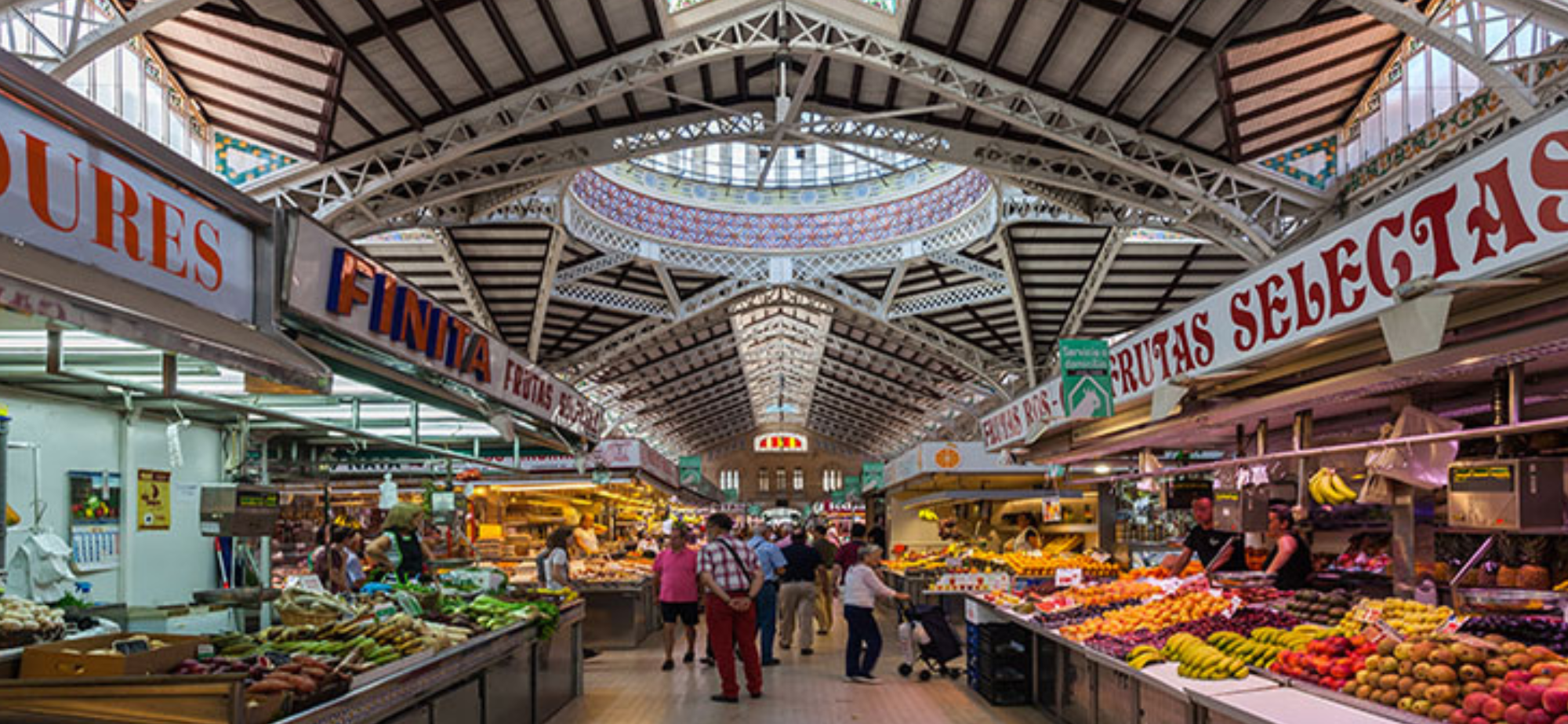Spain, a country known for its vibrant culture, breathtaking landscapes, and historic landmarks, is also a treasure trove for market enthusiasts. From lively food markets brimming with local delicacies to antique bazaars and luxury shopping streets, Spain’s markets capture the essence of its charm.
Whether you’re a foodie, a fashionista, or a bargain hunter, there’s something for everyone in these diverse shopping havens.
In this guide, you’ll dive deep into the markets in Spain, offering practical tips, cultural insights, and must-visit locations to help you make the most of your shopping adventure.
- Top Shopping Markets in Spain
- La Boqueria Market (Barcelona)
- Mercado de San Miguel (Madrid)
- Mercado Central (Valencia)
- Where to Shop in the Famous Flea Markets in Spain
- El Rastro (Madrid)
- Flea Market of Valencia
- Top Local Food Markets in Egypt to Eat In
- Mercado de San Ildefonso (Madrid)
- Mercado de la Reina (Madrid)
- Best Antique Markets in Spain
- Mercado de Antigüedades (Madrid)
- Top Luxury Shopping Spots in Spain
- Passeig de Gràcia (Barcelona)
- Popular Weekend and Night Markets in Spain
- Mercado de Motores (Madrid)
- El Born Night Market (Barcelona)
- Travel Tips for Shopping in Spain
- Why Choose OneVasco?
- FAQs
Top Shopping Markets in Spain
Spain boasts an array of bustling shopping markets that cater to every taste, from high-street fashion to unique handmade items. These markets combine modern trends with traditional charm, making them a must-visit for shoppers seeking variety and quality.
When planning your trip to explore Spain’s vibrant markets, you may want to extend your stay. If you’re considering extending your visit, be sure to check out the visa extension process to make your stay hassle-free.
La Boqueria Market (Barcelona)
A vibrant landmark on La Rambla, La Boqueria is a paradise for food lovers. Enjoy fresh fruits, Mediterranean seafood, and authentic Catalan pastries like ensaimadas.
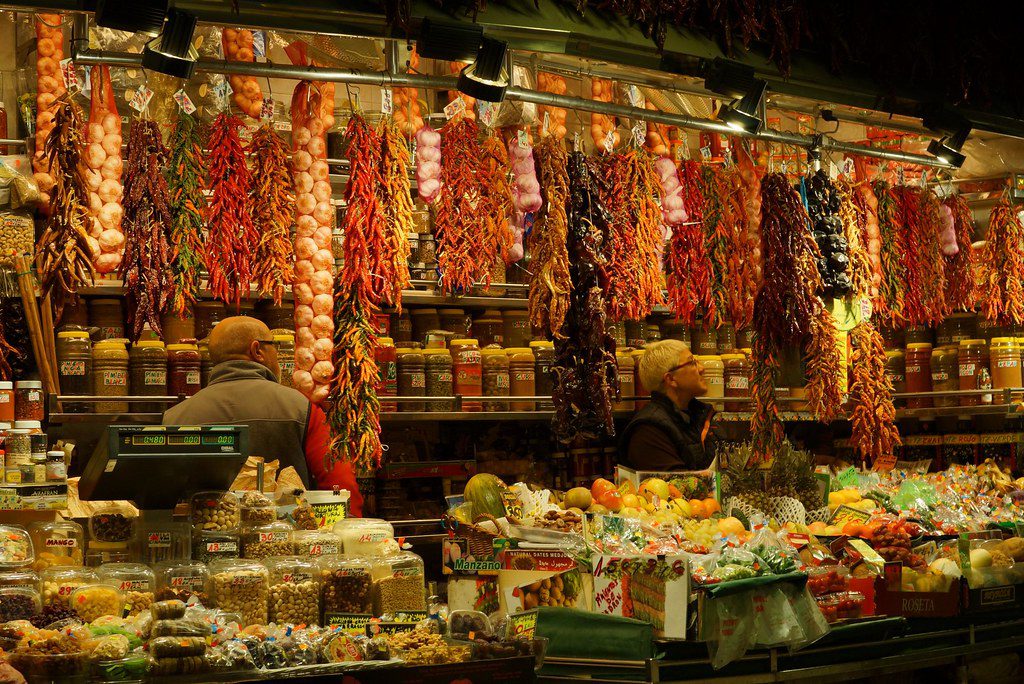
- Opening Hours: Monday to Saturday, 8 AM – 8:30 PM
- Must-Try: Iberian ham, Manchego cheese, and fresh juices.
- Getting There: Metro (L3, Liceu station).
- Website: https://www.boqueria.barcelona/home
Mercado de San Miguel (Madrid)
In the heart of Madrid, this modern market is known for its gourmet tapas and elegant atmosphere. It’s the perfect spot to sample Spain’s culinary delights.

- Opening Hours: Daily, 10 AM – 12 AM
- Must-Try: Seafood paella and croquetas.
- Getting There: Metro (L1, Sol station).
- Website: https://mercadodesanmiguel.es/
Mercado Central (Valencia)
A UNESCO World Heritage Site, Mercado Central boasts over 1,000 stalls filled with fresh produce, local spices, and traditional Valencian goods like horchata.

- Opening Hours: Monday to Saturday, 7:30 AM – 3 PM
- Getting There: Metro (L3, Xativa station).
- Website: https://www.mercadocentralvalencia.es/
Where to Shop in the Famous Flea Markets in Spain
For treasure hunters, the famous flea markets in Spain are a paradise filled with quirky collectibles, vintage finds, and budget-friendly deals. Each market exudes a unique local character, offering a peek into Spain’s cultural and artistic heritage.
El Rastro (Madrid)
El Rastro is Spain’s most iconic flea market, offering everything from antiques to quirky collectibles. Haggling is a must here!
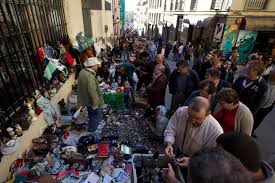
- Opening Hours: Sundays and public holidays, 9 AM – 3 PM
- Insider Tip: Visit early to avoid crowds and snag the best deals.
- Getting There: Metro (L5, La Latina station).
Flea Market of Valencia
This charming market is a haven for vintage lovers. Explore second-hand books, retro clothing, and unique home décor pieces.
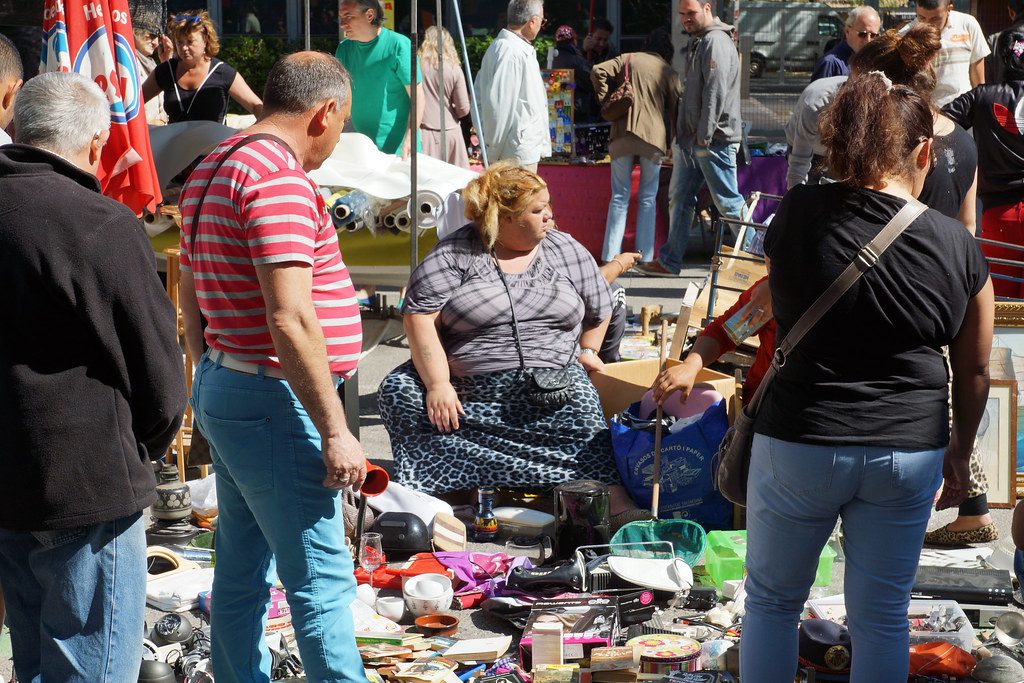
- Opening Hours: Sundays, 9 AM – 2 PM
- Getting There: Near Ruzafa neighborhood; metro accessible.
Top Local Food Markets in Egypt to Eat In
Local food markets in Spain are a feast for the senses, showcasing the freshest produce, seafood, and traditional delicacies. These markets are vibrant culinary destinations for food lovers to experience Spain’s rich flavours!
Mercado de San Ildefonso (Madrid)
A modern, street food-inspired market where you can enjoy Spanish tapas alongside international flavors.
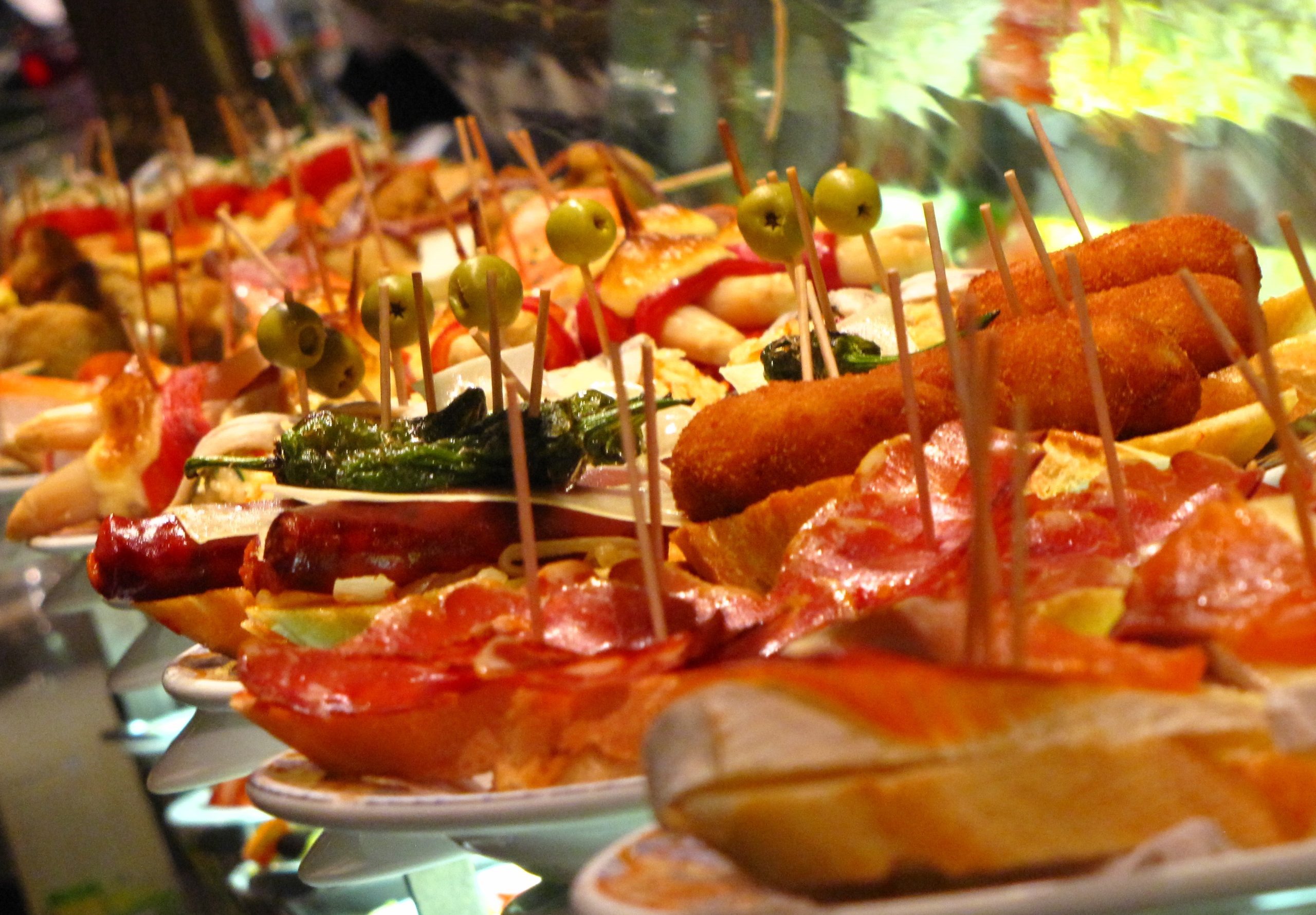
- Opening Hours: Monday to Saturday, 10 AM – 12 AM
- Must-Try: Gourmet churros and craft beers.
- Getting There: Metro (L10, Tribunal station).
Mercado de la Reina (Madrid)
Known for its relaxed ambiance, this market is ideal for sampling Madrid’s tapas culture.
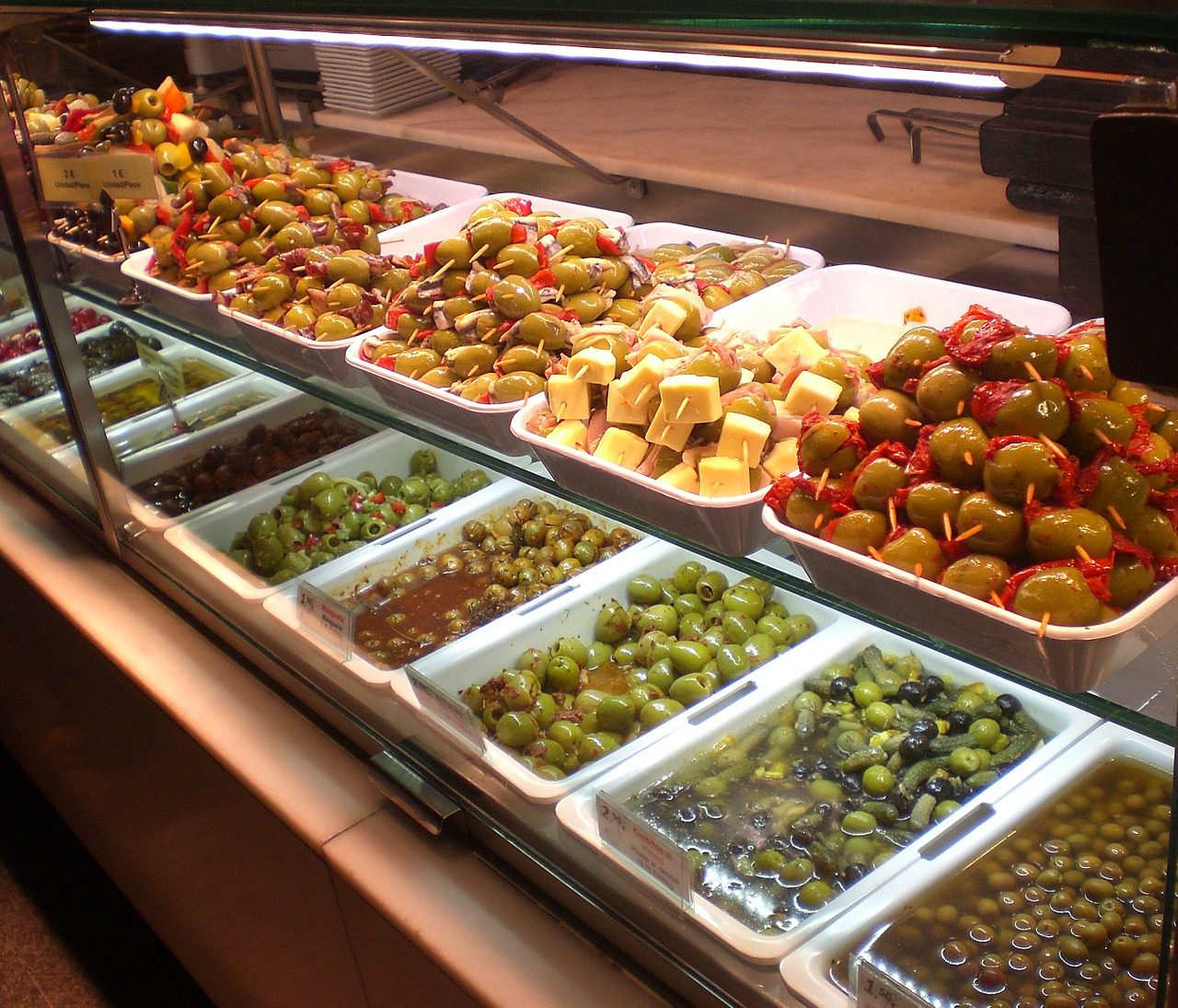
- Opening Hours: Daily, 9 AM – 10 PM
- Getting There: Metro (L5, Gran Vía station).
Best Antique Markets in Spain
Antique markets in Spain are ideal for collectors and history enthusiasts, offering everything from vintage furniture to rare memorabilia. These markets provide a nostalgic journey through Spain’s storied past.
Mercado de Antigüedades (Madrid)
Held monthly in Retiro Park, this antique market is perfect for collectors seeking vintage furniture, books, and art.
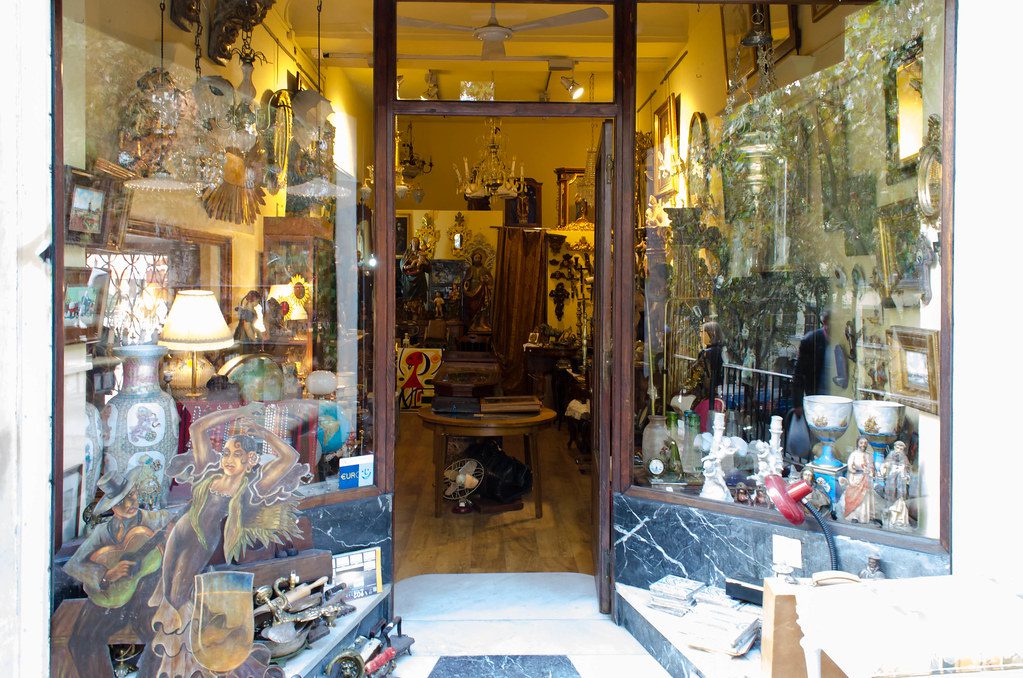
- Opening Hours: First weekend of each month, 10 AM – 5 PM
- Getting There: Metro (L2, Retiro station).
Top Luxury Shopping Spots in Spain
Spain’s luxury shopping spots are a haven for high-end fashion and premium brands. These districts combine opulence and sophistication, making them perfect for those looking to indulge in an upscale shopping experience.
Passeig de Gràcia (Barcelona)
Known as the “Golden Mile,” this street is home to flagship stores like Chanel and Gucci, offering a glamorous shopping experience.
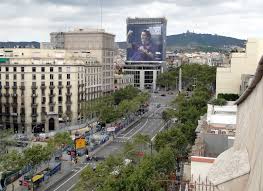
- Opening Hours: Daily, 10 AM – 8 PM
- Getting There: Metro (L3, Passeig de Gràcia station).
- Website: https://barcelonapaseodegracia.com/en/
Popular Weekend and Night Markets in Spain
Weekend and night markets in Spain come alive with a lively ambiance, offering a mix of handmade crafts, gourmet food, and entertainment. These markets provide a unique shopping experience under the stars or during leisurely weekend strolls –
Mercado de Motores (Madrid)
Located in a former train station, this market combines vintage goods, handmade crafts, and delicious food trucks.
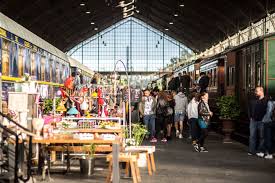
- Opening Hours: Weekends, 11 AM – 10 PM
- Getting There: Metro (L1, Atocha station).
- Website: https://mercadodemotores.es/
El Born Night Market (Barcelona)
During summer, El Born district transforms into a lively night market featuring handmade crafts and live music.

- Opening Hours: Summer evenings, 6 PM – 12 AM
- Getting There: Metro (L4, Jaume I station).
- Website: https://www.barcelona.cat/barcelonacultura/en/cultura-tv/el-born-night
Travel Tips for Shopping in Spain
Knowing the cultural nuances and practical tips can make the shopping experience in Spain better. Follow these do’s and don’ts to ensure you have a smooth and enjoyable time exploring Spain’s vibrant markets –
|
Do’s |
Don’ts |
|
Do wear comfortable walking shoes to explore markets. |
Don’t forget to check opening hours before visiting a market, as they can vary. |
|
Did you learn a few basic Spanish phrases like “¿Cuánto cuesta?” (How much does it cost?). |
Don’t assume everyone speaks English; making an effort in Spanish is appreciated. |
|
Do haggle politely at flea markets and antique stalls. |
Don’t bargain aggressively or disrespectfully; it’s considered rude. |
|
Bring a reusable shopping bag for your purchases. |
Don’t forget to watch your belongings in crowded markets to avoid pickpocketing. |
|
Do try the local food and delicacies available in food markets. |
Don’t eat or drink while walking through markets, as it’s not always considered polite. |
|
Do explore lesser-known local markets for unique finds. |
Don’t stick to just tourist hotspots; you might miss authentic experiences. |
|
Do carry cash, especially small denominations, as many vendors prefer it. |
Don’t rely entirely on credit cards, as not all stalls may accept them. |
By adding cultural insights, practical travel tips, and detailed market highlights, this guide ensures you’re ready to experience Spain’s markets like a pro.
From bargain hunting to indulging in gourmet delights, the country offers a shopping experience like no other. Before diving into the local flavors and unique souvenirs, it’s important to ensure all your travel documents are in order. If you’re unsure about the status of your current visa, you can quickly check your visa status here to avoid any travel disruptions.
Which markets in Spain will you explore first?
Why Choose OneVasco?
OneVasco makes visa applications effortless. Our expert team manages the entire process, allowing you to focus on your journey.
- Enjoy stress-free travel with fast visa approvals.
- Expert and Personalized Support
- Efficient and Hassle-Free Process
- Real-Time Tracking and Updates
- Transparent Communication
- Trusted by Millions
FAQs
What are the best times to visit markets in Spain?
Markets in Spain generally operate from morning until mid-afternoon, with some extending into the evening. The best times to visit are early mornings to avoid crowds and get fresh produce or unique finds. Night markets typically start around 6 PM during the summer months.
What should I know about visa requirements for Spain?
If you’re a non-EU citizen, you may need a visa to travel to Spain. Ensure you check the requirements for your nationality and book your visa appointment through OneVasco to make the process seamless.
Can I haggle at markets in Spain?
Yes, haggling is common in flea markets and antique markets but less so in food markets or luxury shopping spots. Be respectful and polite when negotiating prices to get the best deals.
What are some must-try local foods at Spain’s markets?
Don’t miss out on Iberian ham, freshly made paella, churros with chocolate, and artisanal cheeses. Many markets like La Boqueria and Mercado Central offer delicious street food and tapas as well.
Are credit cards accepted at markets in Spain?
While many larger markets and shops accept credit cards, smaller vendors and flea markets might prefer cash. It’s always a good idea to carry some euros with you for smaller purchases.
What are the best flight routes from India to Spain?
The most common routes from India to Spain include flights from major cities like Delhi, Mumbai, and Bengaluru to Madrid or Barcelona. Popular airlines offering these routes include Emirates, Qatar Airways, Lufthansa, and Air India, often with one or two stopovers.
How much do flights from India to Spain cost?
Flight prices vary based on the season, booking time, and airlines. On average, round-trip flights from India to Spain cost between ₹45,000 and ₹80,000. Booking in advance or during off-peak seasons can help you save money.
Are there direct flights from India to Spain?
Direct flights between India and Spain are limited. However, airlines like Air India occasionally operate non-stop flights. Most flights involve layovers in cities like Dubai, Doha, or Frankfurt.
When is the best time to book flights to Spain?
Booking your flight 2–3 months in advance usually offers the best prices. Traveling during the off-season to visit the markets in Spain, such as late winter or early spring (January to March), can also lead to significant savings.





